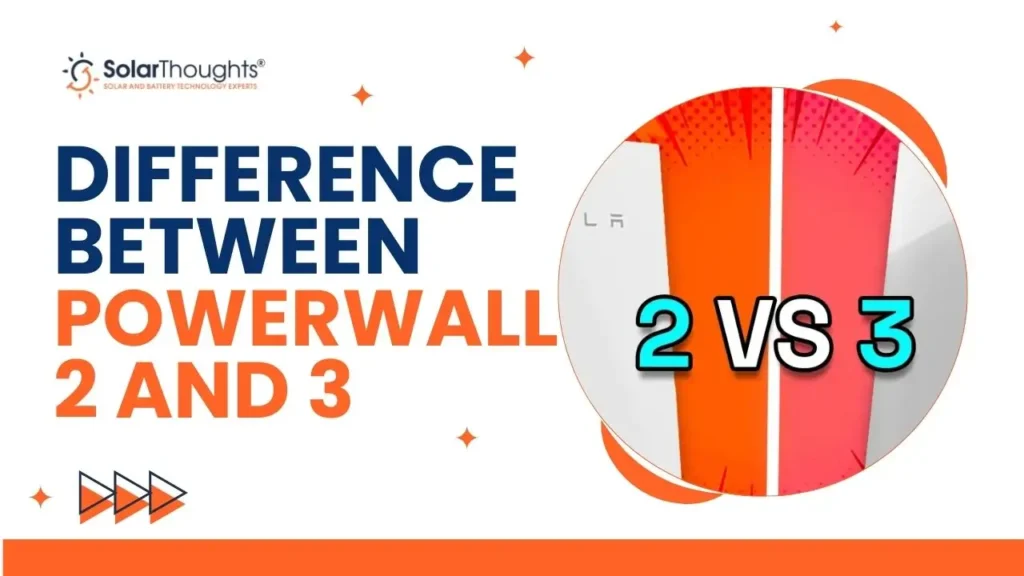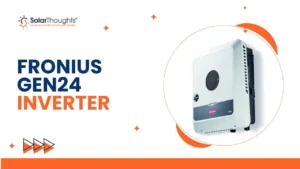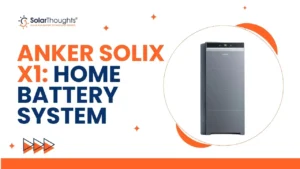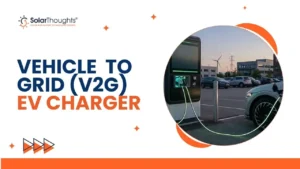Let me explain the difference between Powerwall 2 and 3. Tesla’s home batteries share the same 13.5 kWh usable capacity. The Powerwall 3 packs up to 11.5kW of continuous power – more than double the 5kW output of its predecessor.
Table of Contents
ToggleThe most important upgrade goes beyond just power output. Tesla’s latest battery comes with a built-in solar inverter that eliminates the need for external equipment. The system works more efficiently, too. The newer model achieves 97.5% round-trip efficiency compared to 90% for the Powerwall 2. The Powerwall 2 gives you the option to stack up to 10 units (135kWh total), but the Powerwall 3 maxes out at 4 units (54kWh total). You’ll need to spend $1,500 more to get your hands on the Powerwall 3.
The choice between these home battery systems depends on your specific power needs and budget. Each system’s features and limitations play a crucial role in making the right decision for your home setup.
Power and Performance Differences
Tesla’s Powerwall 3 shows remarkable progress in power output compared to earlier models. The latest version delivers twice the continuous power output of the previous one, which represents a big jump in what these batteries can do.
Power Output: 5kW vs 10kW Continuous
A Powerwall 2 runs at 5kW continuous power output, enough to handle simple household needs like lights and electronics. The Powerwall 3 steps this up to 11.5kW, though Australian regulations cap it at 10kW for grid connections. This doubles the available power, letting you run more devices at once.
The same 13.5kWh battery capacity running at full 10kW will last about 1 hour and 21 minutes. More power means you can run bigger appliances without hitting system limits.
Peak Power Handling: 7kW vs 15kW Surge
Regular power output tells only part of the story. Power spikes matter when motors start up. The Powerwall 2 peaks at 7kW, while the Powerwall 3 can push up to 15.6kW for brief periods.
The Powerwall 3’s motor start capability stands out with 185 amp LRA (Locked Rotor Amperage). This makes it much better at handling those big power surges when motors kick in, compared to what the Powerwall 2 could do.
EV Charging and High-Load Appliance Support
The Powerwall 3’s improved output really shines when powering energy-hungry devices. Standard wall-mounted EV chargers need 7kW – more than Powerwall 2 can handle but easy work for Powerwall 3.
The Powerwall 3 handles these tasks with ease:
- Large air conditioning and HVAC systems during outages
- Multiple power-hungry appliances at once
- Electric stoves and dryers without power issues
These improvements turn the Powerwall from a backup power source into a complete home power solution. You can maintain your normal lifestyle even during power outages.
Inverter Integration and Efficiency
The main difference between these two Powerwall generations lies in how they work with solar systems and handle energy conversion. This fundamental aspect affects everything from how easy they are to install to how well they perform.
Built-in Hybrid Inverter: Absent in Powerwall 2
The Powerwall 2 needs a separate inverter for new solar installations, while the Powerwall 3 comes with an integrated hybrid inverter. Solar panels can connect straight to the battery system thanks to this built-in component. The integration reduces equipment overlap and makes the system more affordable to install.
AC-Coupled vs DC-Coupled Systems
The Powerwall 2’s design works as an AC-coupled system with its own internal AC inverter, which makes it ideal to modernize existing solar setups. The Powerwall 3 uses DC-coupling and creates a more efficient energy flow:
- With AC-coupled Powerwall 2: Solar DC → AC (inverter) → DC (for battery storage) → AC (for home use)
- With DC-coupled Powerwall 3: Solar DC → Battery storage (DC) → AC (for home use)
DC-coupled systems achieve better efficiency because they need fewer conversion steps.
Round-Trip Efficiency: 90% vs 97.5%
The Powerwall 3 delivers an impressive 97.5% round-trip efficiency compared to the Powerwall 2’s 90%. This 8.3% improvement means less energy gets wasted as heat. The system now recovers almost all stored energy instead of losing a tenth to conversion processes.
MPPT Support: None vs 3 High-Current MPPTs
The Powerwall 3 features three high-current Maximum Power Point Trackers (MPPTs), which the Powerwall 2 lacks. These MPPTs optimize power collection from separate solar arrays and handle varying conditions like partial shading effectively. The system can support up to 20kW of solar input, making it a great choice for larger home installations.
Scalability and Installation Flexibility
Physical deployment shows clear differences between these Tesla battery systems. The differences become more apparent when you think over future expansion needs and installation requirements.
Stacking Limits: 10 Units vs 4 Units
Powerwall 2 scales better and supports up to 10 parallel units with a maximum 135kWh capacity. The Powerwall 3 only allows 4 units (54kWh total) right now. Tesla plans to launch battery-only expansion units in 2025 that will let users stack up to 16 modules for a total of 216kWh.
Installation Tools: Powerwall Dolly for PW3
Powerwall 3’s weight led Tesla to create a specialized dolly tool. This tool helps reduce installation complexity with its adjustable lifting handles and braking mechanisms. The dolly makes it safer to position the 130kg unit.
Mounting Options and Dimensions
Users can mount both systems on walls or floors[191]. Powerwall 3 measures 1105 x 609 x 193mm, making it narrower and shorter but thicker than Powerwall 2’s 1150 x 753 x 147mm frame[191].
Cooling Systems: Liquid vs Fan-Based
Powerwall 2’s liquid cooling system manages temperature quietly and efficiently. The Powerwall 3 makes use of an air-cooled system with internal fans. This design is simpler but might create more noise during operation.
Weight and Space Considerations
Powerwall 3 tips the scales at 130kg while Powerwall 2 weighs 114kg[191]. Powerwall 3’s redesigned mounting bracket comes with adjustable feet that make installation easier. The unit also resists floods up to 60cm.
Cost, Compatibility, and Use Cases
Money plays a key role in choosing between these two battery systems. Looking beyond technical specs reveals several key differences in costs, compatibility, and real-world applications.
Price Comparison: $10,400 vs $11,900+
A Powerwall 2 costs about $10,400, while the Powerwall 3 comes in at roughly $11,900. Installation costs range from $1,000 to $4,500 based on setup complexity. You’ll need to buy a Tesla Gateway separately, which adds $2,600 to your total cost.
Compatibility: No Cross-Model Expansion
The two Powerwall models can’t work together in the same setup. Homeowners with Powerwall 2 units can only add more Powerwall 2s to increase their capacity before Tesla stops making them. Tesla will end Powerwall 2 production around mid-2025.
Best Use Cases: New Installs vs Existing Systems
New solar installations work best with Powerwall 3’s integrated inverter. The Powerwall 2 makes more sense for expanding current systems. Homes that already have microinverters might find Powerwall 3 too costly.
Battery Chemistry: Lithium-ion vs LFP
The Powerwall 3 comes with Lithium Iron Phosphate (LFP) batteries that provide better thermal stability without using cobalt. Traditional Lithium-ion NMC (Nickel Manganese Cobalt) cells power the Powerwall 2.
Warranty and Cycle Coverage
Both systems share the same 10-year warranty, with unlimited cycles for normal use and a 70% capacity retention guarantee.
Comparison Table of Powerwall 2 vs 3
| Feature | Powerwall 2 | Powerwall 3 |
| Power Specifications | ||
| Usable Capacity | 13.5 kWh | 13.5 kWh |
| Continuous Power Output | 5 kW | 11.5 kW |
| Peak Power (Surge) | 7 kW | 15.6 kW |
| Round-trip Efficiency | 90% | 97.5% |
| Technical Features | ||
| Built-in Solar Inverter | No | Yes |
| Coupling Type | AC-coupled | DC-coupled |
| MPPT Support | None | 3 High-Current MPPTs |
| Battery Chemistry | Lithium-ion NMC | Lithium Iron Phosphate (LFP) |
| Cooling System | Liquid cooling | Air-cooled with fans |
| Physical Characteristics | ||
| Dimensions | 1150 x 753 x 147mm | 1105 x 609 x 193mm |
| Weight | 114 kg | 130 kg |
| Installation & Scalability | ||
| Maximum Units Stackable | 10 units (135 kWh total) | 4 units (54 kWh total) |
| Mounting Options | Wall or floor | Wall or floor |
| Cost & Warranty | ||
| Base Price | $10,400 | $11,900+ |
| Warranty Period | 10 years | 10 years |
| Capacity Retention Guarantee | 70% | 70% |
Conclusion
Your choice between Powerwall 2 and 3 ended up coming down to your home’s energy needs and current setup. These systems pack the same 13.5 kWh capacity, but Powerwall 3 beats its older sibling with double the power output – 11.5kW versus 5kW. This power boost lets you run more high-energy appliances at once, from EV chargers to big HVAC systems.
The best thing about Powerwall 3 is its built-in solar inverter that cuts down on extra equipment and makes installation a breeze. On top of that, it runs at 97.5% round-trip efficiency, way better than Powerwall 2’s 90%, so you’ll lose less energy during storage and use.
But Powerwall 2 has its strong points too. You can stack up to 10 units to get 135kWh total capacity, while Powerwall 3 only lets you connect 4 units (54kWh). The new model also costs about $1,500 more.
Powerwall 3 shines in new solar setups thanks to its built-in inverter and DC-coupling. Powerwall 2 works better when you’re expanding existing systems, especially ones with microinverters. Your final choice should match your power needs, growth plans, system compatibility, and budget. Whatever model you pick, both come with similar 10-year warranties and are a great way to get more energy independence and reliability.
Our Popular Services
Top-rated solar panels company in Brisbane | Solar Panel Installation in Gold Coast | Upgrading existing Solar system | Solar Panel Repairs and Maintenance | Solar Panel Cleaning Service | Solar Battery Installations | Solar Inverter Installations






